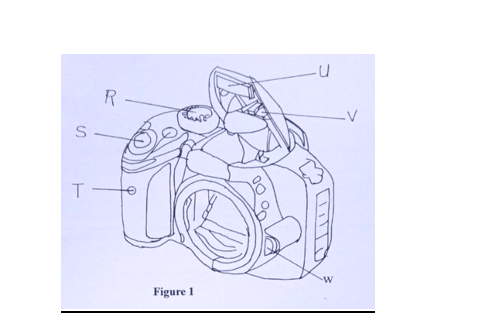Question 3:
- Describe the term camera obcura.
- Highlight the major contributions of the following pioneer inventors in photography:
(i) Joseph Nicephore;
(ii) Louis Dnguere;
(iii) William Fox Talbot;
(iv) George Eastman Kodak.
The question was widely attempted by the candidates. Candidates performance was good. The candidates were expected to answer the question with the following points:
(a) Description of Camera Obscura
- It is a Latin word interpreted ‘dark chamber’ in English.
- Its usage led to the development of modern camera and the invention of photography.
- It is a large box with a hole on one side that allows light pass through to register on a surface inside where the reflected image can be reproduced.
- The reflected image is inverted.
- It was initially used by artists for accurate rendition of scale and perspective in drawing.
- Contributions Of the following pioneer inventors in photography
(i) Joseph Nicephore
- He invented heliography, a process of image production on a pewter plate coated with bitumen.
- Produced first permanent photograph in 1826 that was taken from his barn yard titled “View from the window at grass”.
- His pioneer photograph took eight (8) hours for it to be exposed or formed.
- He partnered with Louis Daguere for further advancement in photography that led to the birth of photography in 1839.
(ii)Louis Daguerre
- He invented Daguerreotype photographic process that led to the birth of photography in 1839.
- His invention produced direct positive image on a silver-coated copper plate using Camera Obscura.
- He succeeded in fixing the image to make it permanent in a warm salt solution.
- His invention reduced exposure time from 8 hours to about 30 minutes.
- The French Academy of Science and Letters took over the copyright of his invention to make it available to users of the process.
(iii)William Fox Talbot
- He invented the first paper negative, fore runner of roll film in analogue or
traditional photography in 1835.
- He invented Calotype or Talbotype negative-to-positive process that made
duplication of images possible.
- He published the World’s first photographically illustrated book “Pencil of
Nature”in 1843.
- The Calotype photo process reduced exposure time to seconds using Garlic
Acid.
(iv)George Eastman Kodak
- He introduced the world’s first portable camera, Kodak No. 1, in 1888 (the new camera could be used by anybody).
- He invented the Celluloid-based roll film with paper back to be used with Kodak No. 1 camera.
- He established Eastman Kodak Company which for many years produced films used in photography and cinema.
- He introduced the earliest commercial processing of roll films in America.

